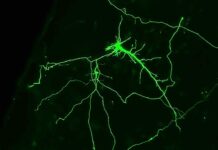Dissecting the Investigation
In a riveting exploration, researchers have unearthed evidence suggesting that dogs possess a keen awareness of their bodies, and they grasp when their own physique becomes a hindrance in performing tasks. Scientific Reports, the esteemed journal, recently published these findings. Over 50 dogs, a diverse mix of breeds, ages, and genders, took part in the study. Astoundingly, the researchers observed that dogs were more inclined to exit a mat in order to retrieve an object tethered to it compared to the control conditions. Consequently, these results imply that dogs can discern the interplay between their bodies and their immediate surroundings.
Unraveling the Notion of Body Awareness
What does it mean for an animal to be aware of its body? Simply put, body awareness refers to the cognitive capacity of an animal to comprehend the dimensions of its body and its interaction with the environment. Picture a toddler realizing they cannot lift a blanket they are sitting on – that’s body awareness.
Experiments: The Main and Control Trials
The study drew inspiration from a previous investigation that focused on elephants. In the experiment, dogs were either standing or sitting on a mat, and an object was fastened to the mat’s periphery. The dogs had to relinquish their position on the mat to complete the task: picking up the object and presenting it to their owner.
To solidify the conclusions, the researchers incorporated two control experiments. The first experiment involved the dog standing on the mat while the experimenter softly pulled an extra rope attached to the mat. This aimed to assess if the dog would depart the mat owing to any discomfort in their paws. In the second control experiment, the target object was secured to the ground with a metal spike. This assessed whether the dog’s response stemmed from the feedback from their paws or simply a reaction to the unresolvable task.
Ecological Pertinence: The Key to Evaluating Animal Self-awareness
Championing an ecological approach to assessing animal self-awareness, the authors of the study emphasize that tests must be pertinent to the species in question. For canines, the understanding of their body and its potential to obstruct progress is a plausible aspect of self-awareness. This rationale stems from the fact that dogs possess intricate nervous systems, exhibit intelligence and agility, and rely on their bodies for balance while engaging in activities such as eating or playing.
Concluding Thoughts
In a nutshell, this groundbreaking study suggests that our canine companions are indeed conscious of their bodies and comprehend the relationship between their physical form and the environment. The authors express hope that their findings will encourage additional ecologically-driven investigations into animal self-awareness.
Google News | Telegram
















